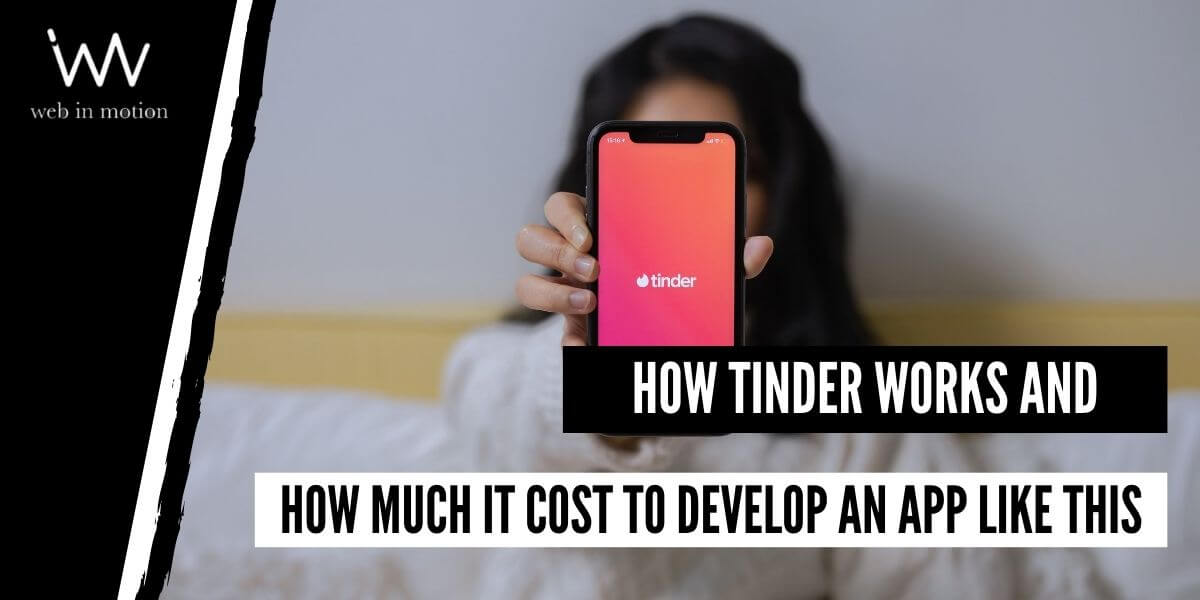
How to does Tinder works and How much does it cost to develop an App like this
Just in case you’ve scaped the hype, Tinder is an online dating app that matches couples based on their physical attraction to one another. Users receive alerts from other Tinder users who fall within a specified age range and gender and are within a limited distance from your location.
Then, you decide whether you like the look of a person. If you do, you swipe right and then wait if the other person likes you back. If you don’t like them, you swipe left and the other person will never know.
If you’re both interested in each other, then you usually use Tinder’s chat function in which you can talk and get to know each other better. Maybe arrange a meeting.
Dating apps are the ultimate tool in an encapsulated world. Recent studies discovered people used to think of dating apps as a last resource to meet possible love matches. Now, most people will consider dating apps as a firsthand way to meet someone. This means the previous stigma is almost gone.
Globally, more than 57 million people use Tinder, which is the biggest dating app. And its algorithm is simple, as it can’t consider many other factors beyond appearance and location.
Tinder is usually known as the “hookup app”, but it’s not explicitly reserved for those types of interactions. At its core, it is a dating app that aims to offer a safe passage to relationships, and even marriage, for a younger generation prone to digital meet-ups.
Now, what’s the fuss about this app? The algorithm. So let’s explain a bit about how does tinder works.
How does Tinder’s algorithm work:
A few years ago, Tinder used an Elo rating system, which is the same method used to calculate the skill levels of chess players. You climbed up in the ranks based on how many people swiped right or liked you. The more right swipes the person had, the more their right swipe on you meant for your score. So, it was a rigged system. Tinder would then serve people with similar scores to each other more often. This way, the algorithm supposed this crowd had similar opinions of “desirability”.
But, in March 2019, Tinder explained that this Elo score was outdated and informed about a new technology, which was then vaguely explained. What we can tell from Tinder’s post is that they had enough users with enough history to predict who would like whom. This means the algorithm now learns from the way users select many of the same profiles as other users who are like them. So, it uses users’ behaviors to predict another’s without competitively ranking them.
Although this is a better system, we can surely say de process still relies heavily on physical appearance. The app is constantly updated to allow users to upload more photos on their profile, while there is no real incentive to add much personal information. Most users keep their bios brief, and some integrate their Spotify and Instagram profiles to add more context without putting any additional information about themselves.
The only biographical information that’s required for a Tinder profile is location and age preferences. The company claims it can pair people based on their past swiping. For example, if you swipe right on a bunch of people who were all swiped right on by some other group of people, maybe you would like a few other people that this previous group already saw and liked. Still, this also means appearance is a huge piece of the system.
From this information, we can also say the algorithm rewards pickiness and “punishes” people who swipe right too much. You’re limited to 100 right swipes every day in Tinder, to make sure you’re looking at profiles and not just spamming everyone to catch random matches.
According to Vox analysts, Tinder sure cares about users making matches, but it cares more about the app feeling useful and the matches feeling real, this means producing conversations and, hopefully, dates.
The app tracks when users exchange phone numbers and can trace which accounts are being used to make real-life connections and which are being used just to mess around. If users go overboard with the right swipes, they may notice their number of matches go down because Tinder serves your profile to fewer users.
How to hack and conquer Tinder’s algorithm
With this input about Tinder’s algorithm, now we know the app is constantly monitoring your activity and trying to understand which traits are a deal for you. And beware of mindless swiping!
If you are interested in conquering the system and are serious in your journey to meeting someone, follow these simple steps.
1. Be selective:
Now we are mostly sure that Tinder “punishes” excessive right swiping by decreasing your matches. So, the intention here is to limit your swipes to the profiles you like for real. Some people say to swipe right only 20% of the people you see and think you’ll match best with.
2. Use Tinder daily:
There’s no way of knowing for sure if the frequency in which you use the app and the amount you swipe will factor into your potential matches. But hypothesis tends to think you must use the app every day: nobody wants to wait days or weeks to hear back from a match. So, try to use the app daily, even if it’s only for five minutes.
3. Use all of Tinder’s features:
When Tinder launches a new feature, they surely favor people using them, to encourage adoption. So, don’t be shy in seizing better ways to find your match.
4. Write to your Tinder matches, no time to overthink!
A lot of people delay this task, and this is a terrible habit if you want to achieve good results. There are a lot of online guides if you struggle with thinking about how to initiate conversation.
5. Pay up:
You may think this measure is a little bit too much, but if you want to be favored by Tinder, be a paying user. And some may argue that as they will want you to continue paying for a long time, they will not let you find what you’re looking for. But frustrated paying users will surely leave fast. So, in-app subscriptions are generally favored by the algorithm.
However, just make sure to have a strong profile before paying subscriptions within Tinder. Search for online tools to evaluate your profile traits, like ROAST.
How much does it cost to develop an app like Tinder?
To calculate a cost, we must start from the main features in Tinder:
- The “swipe” feature to indicate interest in a profile.
- Social media integration, which makes it easy to find someone’s Instagram profile.
- Chatting feature within the app for people to fix a date.
- Tinder has a unique geolocation feature.
- Extra features are available only to premium users but can sum up to this list.
Taking these features, it can be assumed that the cost to develop an app similar to Tinder would come around 40,000 to 50,000 USD. But this is a very rough estimate. Many other factors can increase or lower a mobile app development cost.
How to hack and conquer Tinder’s algorithm
With this input about Tinder’s algorithm, now we know the app is constantly monitoring your activity and trying to understand which traits are a deal for you. And beware of mindless swiping!
If you are interested in conquering the system and are serious in your journey to meeting someone, follow these simple steps.
1. Be selective:
Now we are mostly sure that Tinder “punishes” excessive right swiping by decreasing your matches. So, the intention here is to limit your swipes to the profiles you like for real. Some people say to swipe right only 20% of the people you see and think you’ll match best with.
2. Use Tinder daily:
There’s no way of knowing for sure if the frequency in which you use the app and the amount you swipe will factor into your potential matches. But hypotheses tend to think you must use the app every day: nobody wants to wait days or weeks to hear back from a match. So, try to use the app daily, even if it’s only for five minutes.
3. Use all of Tinder’s features:
When Tinder launches a new feature, they surely favor people using them, to encourage adoption. So, don’t be shy in seizing better ways to find your match.
4. Write to your Tinder matches, no time to overthink!
A lot of people delay this task, and this is a terrible habit if you want to achieve good results. There are a lot of online guides if you struggle with thinking about how to initiate conversation.
5. Pay up:
You may think this measure is a little bit too much, but if you want to be favored by Tinder, be a paying user. And some may argue that as they will want you to continue paying for a long time, they will not let you find what you’re looking for. But frustrated paying users will surely leave fast. So, in-app subscriptions are generally favored by the algorithm.
However, just make sure to have a strong profile before paying subscriptions within Tinder. Search for online tools to evaluate your profile traits, like ROAST.


